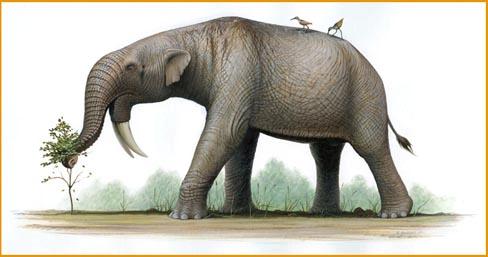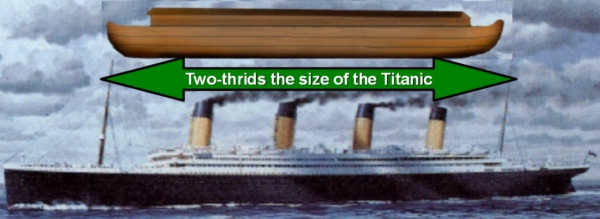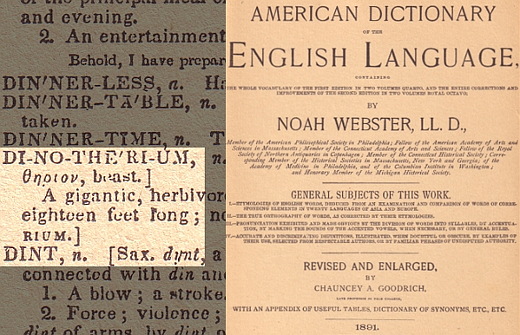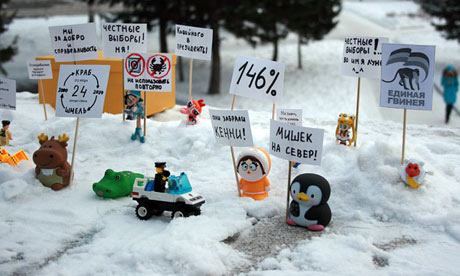As you'll know if you read
this blogpost a while back, or
this or, indeed,
this or
this, I have little truck with Creationists. I have no isssue with faith. I have no problem with religion. I have friends who are religious. And I consider myself a warm, caring, ethical, but atheist human being. As far as I am concerned, we're all free to believe what we want to believe. Or not believe, as the case may be. However, when people deliberately falsify the facts to suit their version of events and then use that to persuade free-thinking and easily-misguided children to share their viewpoint, I do take umbrage.
A couple of days ago I came across a website called
Creation Liberty that purports to present evidence that the story of creation, as recorded in the Bible, is the absolute truth word-for-word. However, the whole website consists of nothing more than attacks on evolutionary theory and accepted science. Meanwhile, there is almost no attempt to provide any concrete evidence for the Creationist version of events. The 'proof' it provides is largely inaccurate and woefully misleading. Let me show you some examples:
One page, all about dinosaurs, starts:
'How did the dinosaurs become extinct? This question is not designed to help students to think, but rather is designed to tell them what to think. This question assumes that dinosaurs went extinct. For example, there are panthers still living wild in Florida. Many people have lived their entire lives in Florida, and have never seen a panther. Because they have not seen one, does that mean panthers do not exist in Florida? No, it simply means they are hard to find. No one could prove the extinction of anything unless they were at all places at all times at the same time. So the real question here is not, 'How did the dinosaurs go extinct,' but rather, 'Did they go extinct?'
This is a hugely lazy argument. What the author, Christopher J E Johnson, utterly fails to point out is that, while many people have never seen a panther,
some people have. There are eyewitness accounts. There is physical evidence in the form of corpses, bones and panther poo. And there are photographs - lots of photographs. Johnson uses a few grainy pics and dodgy accounts of creatures such as 'The Lockness (sic) Monster' as his evidence that dinosaurs still exist. He doesn't comment on the fact that photos of Nessie have completely dried up since the advent of decent quality digital cameras, Google Earth and mobile phones. Nor does he address the fact that not all the dinosaurs
did become extinct. There is compelling evidence that some species evolved into birds. As for
'No one could prove the extinction of anything unless they were at all places at all times at the same time', that statement applies to everything, surely? You can't definitively say that there are no fairies or goblins unless you were in all places at all times. But you can make the reasoned assumption that, as there is absolutely no evidence of their existence, they most likely don't.
He then goes on to explain that:
'All throughout history, dinosaurs have been known as 'dragons.' Many evolutionists make complaint that dinosaurs are not mentioned in the Bible, but that is simply not true. Dragons are mentioned in the Bible 34 times.' Is this true? Do 'many evolutions' complain about this? Have we called dinosaurs dragons 'all throughout history'? As I recall, they were only named and described for the first time in the 1840s. I wouldn't call under 200 years 'all throughout history'. And while it's quite feasible that ancient dinosaur skeletons might once have been seen as the bones of mythical dragons, it's a tenuous argument at best to suggest that the dragons mentioned in the Bible are therefore sightings of dinosaurs. For a start, many dinosaurs were small and not exactly fearsome. These are surely the most likely candidates for prolonged survival rather than the huge charismatic specialist dinosaurs? Rats will outlive lions, trust me. No dinosaur had wings - as most mythical dragons invariably do. There were once pterosaurs, of course, but they probably didn't breathe fire (if that were even possible) and they weren't dinosaurs. They were as closely related to dinosaurs as a blue whale is to a platypus. Oh, and the website's 'evidence' that dinosaurs and dragons are one and the same includes scans of older text books, the largest of which uses the description of the species
dinotherium as an example.
This is a dinotherium. It's a mammal.

This is the kind of shoddy, badly-researched material that is purporting to be a more accurate account of the story of life on this planet than evolutionary theory.
I must stress again that I'm not on the attack here. I'm really not. I would never launch a website decrying faith in God and pulling the Bible to pieces. I am happy to read and discuss Creationist literature and the content of their websites. I do so often. I'm a curious and enquiring guy. What I'm looking for, as a reasoned and critical thinker, is evidence that supports their claims. I'm looking for any argument that is stronger than the evidence provided by the fossil record and the very clear evidence all around us that plants and animals can and do change form over time. What most Creationism material - including the website under discussion - usually provides me with is unsupported assertions or, most commonly I'm afraid, ill-researched attacks on evolutionary theory. I've lost count of the times I've read that there are 'no missing links between modern species and so-called extinct species'. Yes there are! Lots! Look at the dizzying variety of trilobite fossils! There are so many that you can actually see, as clear as the nose on your face, the slow and steady development of the eye over time. Then there are larger missing links like the recently discovered tiktaalik (see below). If the Creationist lobby would be as open to new information as most of us Evolutionists are, they'd read more widely and see that missing links exist all over the place.

Let's return to the website and just look at a couple more pieces of 'evidence'. Johnson provides images of an Egyptian pot which he claims clearly shows long-necked dinosaurs. Ten minutes of research will show that this is a fairly common stylistic representation of giraffes. Just looking at the shapes of the heads, legs and tails is enough. And, let's be honest, the Egyptians would be quite au fait with giraffes as Egypt is on the African continent. A supposed stegosaurus turns up on a 12th century Cambodian temple. But had the author cared to do even a simple Google search of that same temple, he'd have found all kinds of other animal images including monkeys and peacocks that also lie inside decorative lotus leaf borders that kind-of look like the plates on a stegosaurus's back. Presenting a few highly-seective images as 'evidence' is invalid and doesn't take into account Mankind's wonderful propensity for creativity in art. It's like selecting a few images by Picasso, Tretchikoff and even Peyo and making the conclusion that blue-skinned humans once existed. I could also mention the many thousands of images of God and Jesus, most of which are wildly different to each other, and none of which were painted by anyone who'd actually met either of them. Art is not proof of form or even existence.
I could go on and on but that would support the idea that this is an attack on Mr Johnson who is very probably a lovely human being. I want this to be read as a friendly challenge to the author to exhibit some proper evidence to support his claims, rather than the fuzzy logic and mishmash of inaccuracies he has provided. And also to not base his entire argument on attacking evolutionary theory, all of which can be supported with evidence.
I will, however, make a few final observations on Johnson's assertion that the story of Noah's ark is true. He states that:
'(1) The boat was 2/3rds the size of the Titanic. (300x50x30 egyptian cubits = 1.54 million cubic feet) Also taking into consideration that there were no lavish ballroom, dining halls, 1st-class accomodations (sic), engine rooms, etc. huge numbers of animals could be stored in a boat that size.'
(2) The Bible does not say Noah had to get two of every species. The evolutionists use the word species, and then illogically apply their modern definition back in time to the Bible, and call the Bible wrong. The Bible says bring two of every 'kind' so the question is how many kinds of animals did Noah take on the ark? God told Noah to take two of each kind, and seven of some kinds (Genesis 7:2-3), and we can also determine that this did not include insects or fish. (Genesis 7:22) Where exactly is the line between each kind? Scientists have not yet determined the kind barriers for many creatures, but some have estimated there are around 8,000-10,000 basic kinds of animals on the planet, which is much more reasonable for Noah and his family to accomplish.'

Let's take these two points together to begin with. The website states that '
scientists have not yet determined the kind barriers (sic) for many creatures'. Actually, yes they have. We've had a very sophisticated form of taxonomic classification and scientific nomenclature for over 200 years (see
here). Saying that there may be as few as 8000 -10,000 'basic kinds of animals' without qualifying where that figure comes from or how those classes are decided is meaningless. But even if we accept it, could a boat - even one 2/3rds the size of the Titanic - fit them all in? Yes, he does suggest that baby animals were taken on board to save space (although the Bible fails to mention this) and, handily, that they were all vegetarians prior to the flood. But even if that were true, how would you sort out the vast range of environments from polar to equatorial that some 'kinds' need in order to survive (Presumably, Noah and his unnamed wife travelled all over the globe to collect them too)? What about the vast quantities of food they'd all need? What about the poo and the pee? And, while the fish and the insects may have been excluded for some reason, what about the whales? What about the sea urchins and turtles and prawns and scallops and squid? Meanwhile, all of the sea fish would have died due to the oceans being made fresh by enough rain to cover the Earth to the tops of the highest mountains; salt water fish cannot survive in fresh and vice versa. So where did all the cod come from? There are no answers to be found here.
But the biggest fudging of the facts is the argument that God didn't mean species but 'kind'. Where is that line drawn? Does that mean two tigers, two lions, panthers, ocelots, cheetahs, lynxes, pumas, wildcats, jaguars, caracals, bobcats, margays, leopards, servals and domestic cats? And, I guess, because we can't prove that they're extinct, all of the prehistoric cats like the sabre-toothed smilodon too? Or does it mean two generic cats that were the progenitors of all of the different species of cat that exist now? How would this happen? Not by genetics, natural selection and evolution surely? If Creationist theory allows such variation on a theme within a family of animals such as
felidae (cats), then why not within the order of
Carnivora? Or the phylum
Chordata? Is it really so hard to imagine that, over tens of millions of years, whales and bears could have evolved from a common ancestor? Creationists spend all their time focusing on the outward appearances of animals and handily overlook the fact that animals as diffferent as bears and whales have more physical similarities than differences. Whales once walked on four legs; they have the atrophied remnants of a pelvis and leg bones embedded in their flesh. They're not just there by random chance. They serve no purpose. That's hardly intelligent design is it?
The point to make here is that if you're going to present a valid argument to an accepted theory, do so with facts, figures and physical evidence, not cherry-picked images, innacurate reporting (Sir Peter Scott was never a member of parliament - he stood as a Conservative candidate in 1945 and lost - Nor did he or his wife ever see Nessie or claim to have done so), and lazy assumptions. The theory of evolution is what all theories are - the most likely answer to a question based upon the evidence currently available. Like any theory, it can change and adapt if new evidence comes to light. It can also be proven to be downright wrong. But you need convincing arguments to do that. If there ever comes a day when the Creationist movement finds the evidence to support their argument, I will gladly accept it and so will every right-thinking scientist on the planet. Evolution is not a religion as Johnson so absurdly claims. It is a belief based upon facts. Creationism is a belief based solely upon faith.
To put it another way, I'd rather have proof - rather than blind faith - that there's a parachute in my back pack before jumping from the plane. I'd also argue that making others jump blindly because you say that they must is wrong on every level. You must give them the option to look for themselves oif they want to.
So, by all means teach children that there are two versions of events, the scientific view and the Biblical view. Throw in some other theories too such as panspermia or alien intervention. It's good to explore different possibilities; it creates enquiring minds and intelligent discussion. But let the children decide what they want to believe. Let them examine the evidence and make a choice. If they choose to believe that every word in the Bible is true, that's their right. But don't force them to that view with lies and misleading nonsense. My children were brought up with all the facts to hand and with no bias from me. One believes that there is a god or higher being, the other two don't. I respect their beliefs. I have religious friends - one is a vicar - who can quite happily square evolution with belief in God. They don't have to be polarised opposites or mutually exclusive. They can co-exist. Many scientists have faith. And, anyway, the Reverend Dave has the ultimate trump card as I can never prove that God didn't invented the elegant, sophisticated and beautiful (his words) process of natural selection.
Evolutionary theory isn't evil. It has no agenda. It's not a religion. It's open to new ideas. It's not out to prove the non-existence of God. Creationism, by comparison, is blinkered and often aggressively defensive. It's a viewpoint that allows for no flexibility of thinking. If you don't agree with the precise description in the Bible, you're wrong. End of argument. Sites like Creation Liberty do not expand intelligent discourse and do nothing for the Creationist movement except to expose some of them as ill-informed and ignorant (in the true sense of the word).
According to the Bible itself, faith is 'being sure of what we hope for and certain of what we do not see' (Hebrews 11:1). Faith should be enough for you Mr Johnson; believe what you want to believe. But use your energies for good deeds and kindness. Help to create the next generation of good, ethical men and women. Help to create the next generation of scientists and philanthropists who will cure diseases, ease suffering and expand our knowledge of this amazing universe. Don't put all of your passion into raging against a theory you don't subscribe to, clearly don't understand and, from the evidence of your own website, refuse to even consider as a possibility.




























